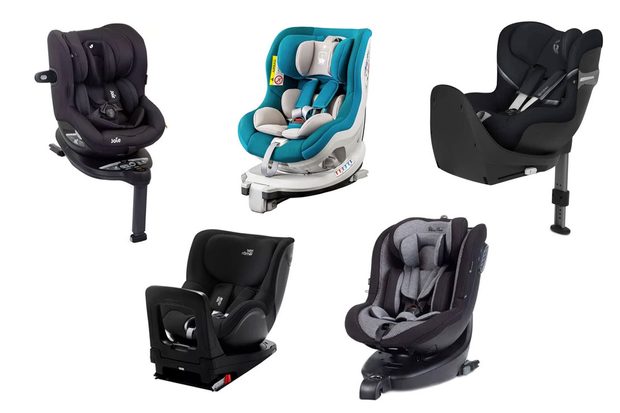The Importance of Car Seat Safety: Protecting Your Child
Whether you've been injured in an accident, are dealing with a personal injury claim, or facing another legal issue, Mendez & Sanchez APC is here to fight for you. Contact us today for a free, no-obligation consultation.
Call Us Now
Car seat safety is a critical aspect of parenting, and it cannot be emphasized enough. As a parent, your child's safety is your utmost priority, and taking appropriate measures to protect them while on the road is crucial. Car accidents can happen unexpectedly, and ensuring your child is securely fastened in an appropriate car seat can significantly reduce the risk of injuries or even save their life. In this article, we will explore the importance of car seat safety and provide you with essential information to keep your child safe while traveling.
The Importance of Car Seat Safety: Protecting Your Child
Ensuring the safety of your child while traveling in a vehicle is of paramount importance. Car accidents are unpredictable, and the impact can be severe, especially for young children who are more vulnerable to injuries. By using a properly installed and appropriate car seat, you provide your child with a protective cocoon that minimizes the risk of injury during a collision. Car seat safety acts as a barrier between your child and potential harm, absorbing the impact and distributing forces evenly, thereby reducing the likelihood of serious injuries.
Understanding the Basics: Types of Car Seats
Infant Car Seats
Infant car seats are specifically designed for newborns and young babies. These seats are rear-facing and offer maximum protection for infants during their early months. They provide a snug and secure environment, cradling the baby's fragile head and neck while distributing crash forces over the seat's back.
Convertible Car Seats
Convertible car seats are versatile and can be used in both rear-facing and forward-facing positions. They are suitable for infants as well as toddlers, offering extended use and ensuring your child's safety as they grow. Starting in the rear-facing position and transitioning to forward-facing when your child meets the height and weight requirements, convertible car seats provide a seamless transition as your child progresses.
Booster Seats
Booster seats are designed for older children who have outgrown their convertible car seats. These seats elevate your child to the appropriate height, ensuring that the vehicle's seat belt fits them properly. Booster seats provide additional support and protection, reducing the risk of injury in case of a crash.
Seat Belts for Older Children
Once your child has outgrown the need for a booster seat, they should continue using a seat belt. However, it is essential to ensure that the seat belt fits them correctly. The lap belt should rest snugly across their upper thighs, while the shoulder belt should cross their chest and shoulder without cutting into their neck.
Choosing the Right Car Seat
Selecting the right car seat for your child can be overwhelming, especially if you are a new parent. There are many different types of car seats to choose from, each designed for specific ages and weights. Here are some tips for selecting the right car seat:

Check the Height and Weight Limits
Before purchasing a car seat, check the height and weight limits to ensure that it is appropriate for your child. Car seats are typically classified based on the child's weight and height.
Choose a Seat that Fits Your Vehicle
Not all car seats fit in all vehicles, so it's important to make sure that the car seat you choose fits in your vehicle. Before purchasing a car seat, check the manufacturer's website to ensure compatibility with your vehicle.
Look for the Safety Ratings
When selecting a car seat, look for one that has high safety ratings. The NHTSA provides safety ratings for car seats based on their ease of use and crash test performance.
Proper Installation and Usage
Ensuring that your child's car seat is properly installed and used is of paramount importance. Many parents unknowingly make mistakes in this regard, compromising the effectiveness of the car seat. Here are some key points to consider:
- Selecting the Right Car Seat: Choosing the appropriate car seat for your child's age, weight, and height is essential. There are different types of car seats available, such as rear-facing infant seats, convertible seats, and booster seats. Be sure to read the manufacturer's instructions and guidelines to make the right choice.
- Installing the Car Seat: Follow the installation instructions provided by the car seat manufacturer and the vehicle's owner manual. The car seat should be securely fastened and should not move more than an inch in any direction.
- Proper Harnessing: Ensure that the harness straps are adjusted correctly, snugly securing your child in the car seat. The chest clip should be positioned at armpit level, and the straps should lie flat against the child's body without any twists.
- Checking for Recalls: Regularly check for any recalls or safety notices related to your child's car seat. Manufacturers occasionally issue recalls to address safety concerns or improve the design of their products.

The Right Timing for Transitioning
As your child grows, you will need to transition them to different types of car seats to ensure their safety. It is crucial to make these transitions at the right time. Here are the key stages of transitioning:
- Rear-Facing Car Seat: Infants and toddlers should be placed in a rear-facing car seat until they reach the maximum weight or height limit specified by the manufacturer. This position provides optimal protection for their fragile neck and spine.
- Forward-Facing Car Seat: Once your child outgrows the rear-facing car seat, they can move to a forward-facing car seat with a harness. This seat should be used until your child reaches the maximum weight or height limit recommended by the manufacturer.
- Booster Seat: When your child exceeds the weight or height limits for a forward-facing car seat, they should transition to a booster seat. A booster seat ensures that the vehicle's seat belt fits properly across your child's chest and lap.
- Seat Belt: Finally, when your child outgrows the booster seat, they can use the vehicle's seat belt. Make sure the seat belt fits snugly across their lap and chest, and they understand the importance of always wearing it while in the car.



